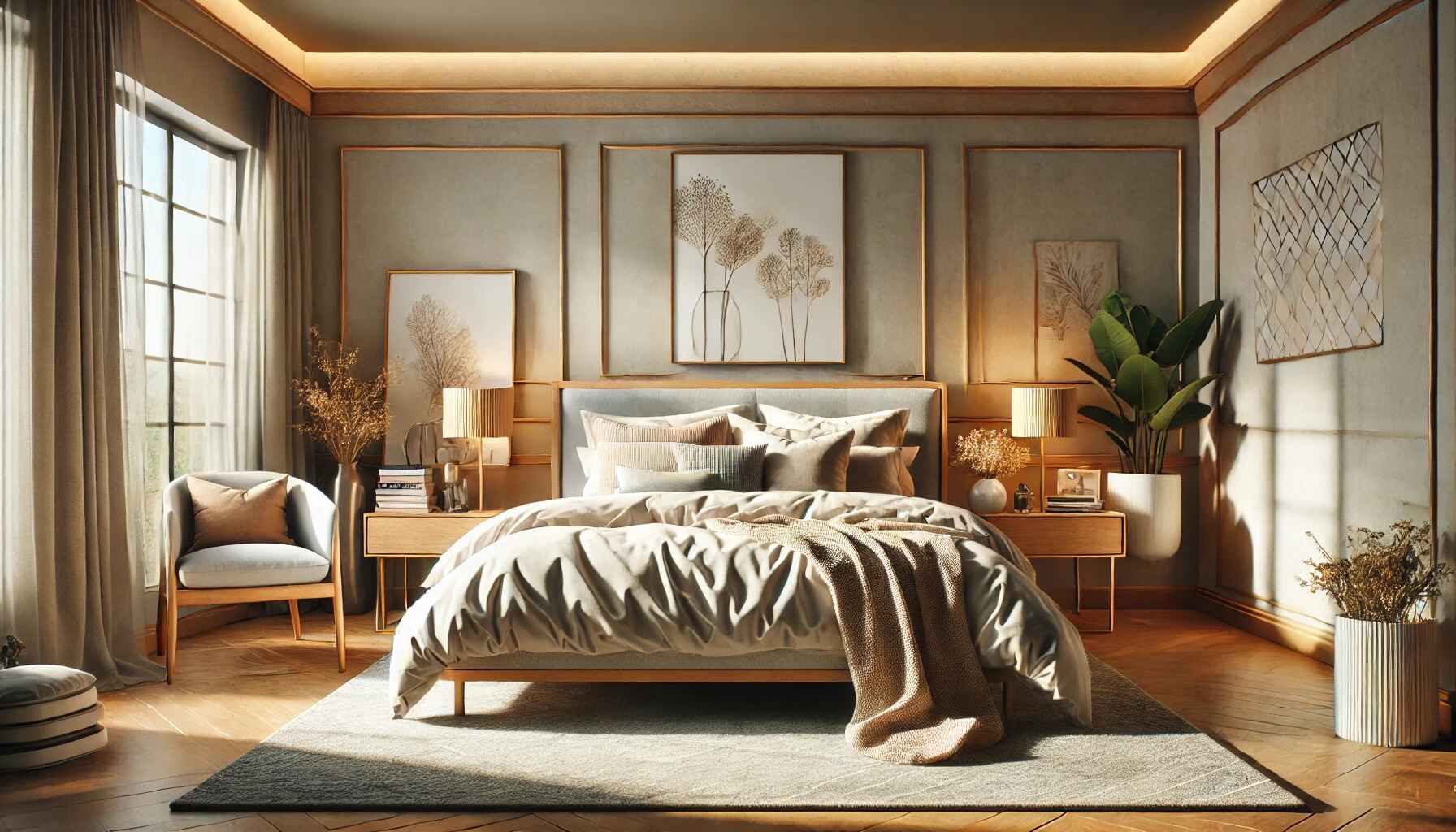Guide to Bedroom Interior Design is more than just a place to sleep; it is a personal sanctuary where you begin and end each day. A well-designed bedroom interior should reflect your style, provide comfort, and promote relaxation. Whether you are starting from scratch or looking to refresh your current space, these key elements of bedroom interior design will help you create a space that is both functional and aesthetically pleasing.
Understanding Your Space
Before diving into design choices, take time to understand the dimensions and layout of your bedroom. Measure the space to determine what furniture and decor will fit comfortably. Consider the placement of windows and doors, as these will affect your layout options and natural light availability.
Choosing a Color Palette
The color palette sets the tone for your bedroom. Soft, neutral colors like beige, gray, and white create a calm and serene environment. If you prefer more vibrancy, consider muted tones of your favorite colors, such as pastel blues or greens, which can still provide a relaxing atmosphere. Using an accent wall can also add a focal point without overwhelming the space.
Selecting Furniture
When it comes to furniture, focus on pieces that balance functionality and style. The bed is the centerpiece of the bedroom, so invest in a high-quality frame and mattress. Complement it with nightstands that provide storage without taking up too much space. A dresser or chest of drawers is essential for additional storage, and if space allows, a comfortable chair or bench can add a touch of luxury.
Lighting Considerations
Lighting plays a crucial role in bedroom design. Aim for a mix of ambient, task, and accent lighting to create a versatile and cozy environment. Overhead lighting provides general illumination, but it should be complemented by bedside lamps for reading and other tasks. Consider dimmable lights to adjust the brightness according to your needs. Accent lighting, such as fairy lights or wall sconces, can add a warm and inviting touch.
Incorporating Textiles
Textiles are essential for adding comfort and style to your bedroom. Choose high-quality bedding with a mix of textures and layers to create a luxurious feel. Area rugs can add warmth and comfort, especially on hardwood or tile floors. Curtains not only provide privacy but also contribute to the overall aesthetic. Opt for blackout curtains if you need to block out light for better sleep.
Personal Touches and Decor
Your bedroom should reflect your personality and tastes. Incorporate personal touches through artwork, photographs, and decorative items. A gallery wall can showcase your favorite pieces, while a statement mirror can add both function and style. Plants can also bring life and freshness to your space. Be mindful of clutter; a few well-chosen items will have more impact than an overcrowded room.
Optimizing Storage
Effective storage solutions keep your bedroom tidy and organized. Utilize under-bed storage for items you don’t need daily. Built-in wardrobes or custom closets maximize space and keep your belongings organized. Consider multifunctional furniture, such as a bed with drawers or a storage ottoman, to make the most of your space.
Maintaining Balance and Proportion
Balance and proportion are key to a harmonious bedroom design. Ensure that furniture and decor are scaled appropriately to the size of your room. Avoid overcrowding by choosing pieces that fit well within the space and allow for easy movement. Symmetry can also create a sense of order and calm, especially in smaller rooms.
Conclusion
Designing your bedroom is an opportunity to create a personal retreat that combines comfort, style, and functionality. By thoughtfully selecting colors, furniture, lighting, textiles, and decor, you can transform your bedroom into a space that truly reflects your personality and meets your needs. Whether you prefer a minimalist approach or a more elaborate design, the principles of good design remain the same: balance, harmony, and personal expression. Embrace these elements, and you’ll create a bedroom that is both beautiful and inviting.

